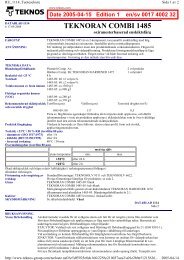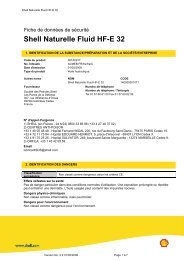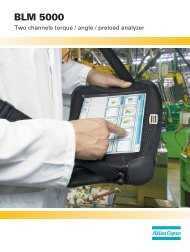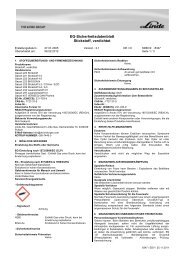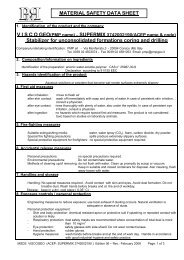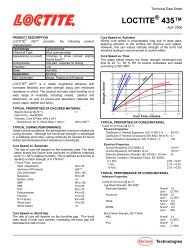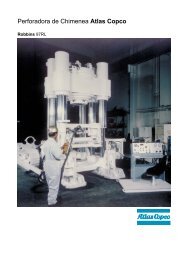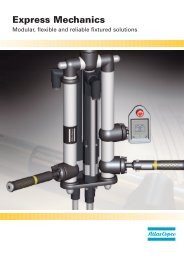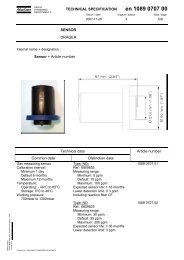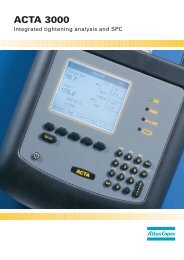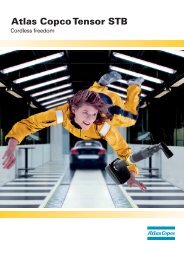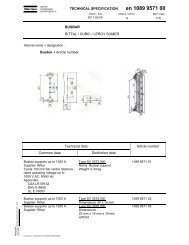Ergonomics - Atlas Copco
Ergonomics - Atlas Copco
Ergonomics - Atlas Copco
Create successful ePaper yourself
Turn your PDF publications into a flip-book with our unique Google optimized e-Paper software.
110<br />
In the GTG 40 grinding machine, this has<br />
been solved by locking the guard with com-<br />
pressed air when the machine is running.<br />
From our simulations we could see that<br />
a rigid support handle with a mass at the<br />
end could also increase the inertia. On the<br />
other hand, an excessively large mass at the<br />
end caused increased vibration of the throt-<br />
tle handle. The alternative of isolating the<br />
support handle from the machine housing<br />
was also considered.<br />
Isolation between source and hand<br />
The most common way to do this is to iso-<br />
late the handles with a mass spring system.<br />
Here two cases can be studied – one with<br />
a dominant direction of vibration, and the<br />
other with a complex vibration pattern in<br />
three directions and rotation as well.<br />
Designing vibration isolation for the sup-<br />
port handle is done by placing a spring element<br />
between the body of the machine and the han-<br />
dle. The handle itself is the mass. Thus, from a<br />
dynamic viewpoint, we disconnect the weight<br />
and moment of inertia of the handle from the<br />
machine. Accordingly, the center of rotation of<br />
the combined system is moved and, more im-<br />
portantly, the restraining effect of the handle’s<br />
moment of inertia disappears. The machine<br />
will thus vibrate more than previously.<br />
This effect can be studied by analysis in<br />
running mode. Vibration is measured at a<br />
number of different points on the machine<br />
and a computer animation of the tool’s<br />
geometry is obtained based on the values<br />
gained. During animation, the movement<br />
of the tool is greatly magnified, permitting<br />
study of the movements of different parts of<br />
the machine in relation to each other.<br />
Here the handle is running out of phase<br />
with the machine and the vibration actually<br />
increases due to the dynamic disconnection<br />
of the support handle. The dynamic proper-<br />
ties of the complete system, machine and<br />
handle, must be considered to avoid the<br />
resonance frequency of the total system<br />
matching the rotational frequency of the<br />
machine, because this will amplify the<br />
vibration.<br />
Whether the rigid handle or the isolated<br />
handle is best from the point of view of<br />
hygiene is an interesting question.<br />
However, covering a handle with a layer<br />
of visco-elastic material and claiming a<br />
reduction in vibration is wrong. The cut-off<br />
frequency for this design is above 300 Hz<br />
and most of the vibration energy in a power<br />
tool handle is below that frequency – thus,<br />
there is no reduction in vibration.<br />
How far should we go?<br />
Measures of this kind have resulted in<br />
a tool with vibration emission values below



